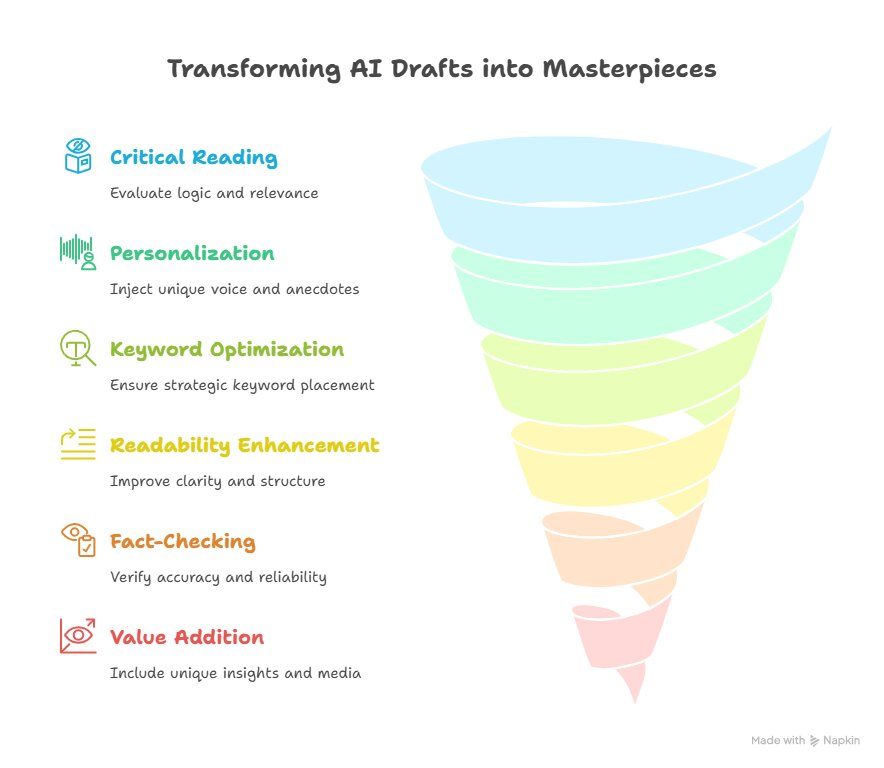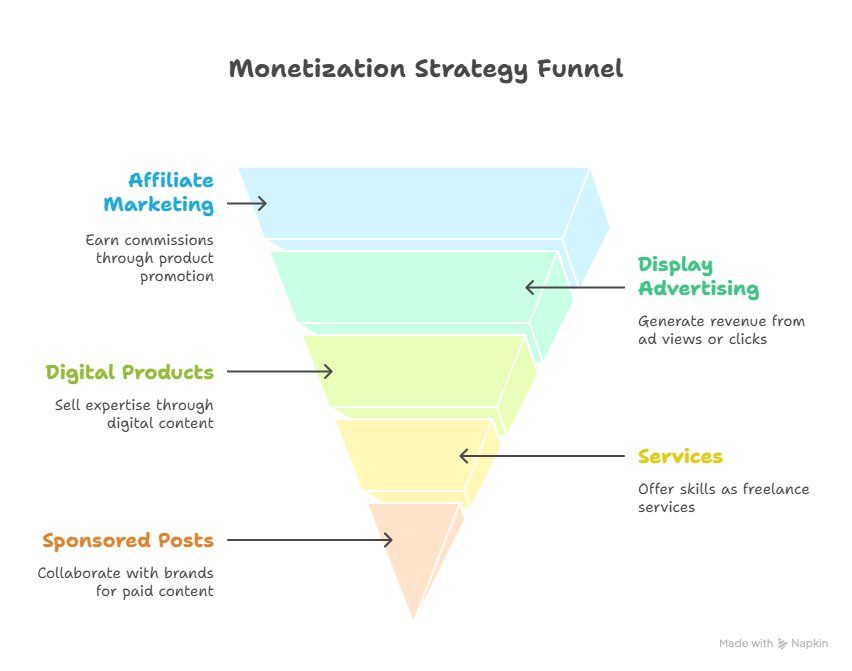Table of Contents
Okay, let’s cut the fluff. You’re here because you want to make money blogging, right? You’ve probably heard the whispers (or shouts) about AI changing the game, and tools like DeepSeek AI are popping up everywhere. But how do you actually use this thing to create blogs that Google loves and readers click, ultimately leading to cash in your pocket? Not just generic, robotic garbage, but real, engaging, money-making content
Friend, grab your favorite beverage (coffee, tea, something stronger after wrestling with keyword research – I won’t judge), and let’s chat. I’ve been down this rabbit hole, experimenting like a mad scientist, and I’m here to spill the beans on using DeepSeek AI effectively. Forget the hype; let’s talk practical, actionable steps.
Why DeepSeek AI is Your New Best Friend for SEO Blogging (Sorry, Human Writers!)
Look, I love human writers. Brilliant minds crafting beautiful prose? Chef’s kiss. But let’s be brutally honest for a sec. Hiring them consistently for SEO-focused content? That gets expensive fast, especially when you’re starting out or scaling. And frankly, not every blog post needs Shakespearean levels of artistry. Sometimes you just need clear, helpful, keyword-optimized content that ranks and converts.
That’s where DeepSeek AI struts in. It’s not about replacing your creativity; it’s about supercharging your efficiency. Think of it as your tireless, caffeine-free research assistant and first-draft generator rolled into one. Here’s why it shines for SEO blogging:
- Speed Demon: You can research and draft a solid foundation for a post in minutes, not hours or days. Game. Changer.
- Keyword Whisperer: It helps brainstorm relevant keywords, understand search intent, and naturally weave them into your content. No more awkward stuffing!
- Idea Machine Stuck? Hit a wall? DeepSeek can generate dozens of blog post angles, headlines, and outlines faster than you can say “writer’s block.”
- Structure Savior: It excels at creating logical outlines and ensuring content flows well – crucial for both readers and search engines.
- Cost-Effective Scaling: Produce way more high-quality content without blowing your budget. More content = more potential traffic = more potential revenue.
Is it perfect? Nah. Does it sometimes produce slightly off-topic tangents or generic phrasing? Sure. But that’s where you, the savvy blogger and editor, come in. DeepSeek provides the clay; you sculpt the masterpiece (or at least the perfectly functional, revenue-generating vase!).
Getting Started: Your DeepSeek-Powered SEO Blogging Toolkit
Before you unleash the AI beast, you need a few basics. Don’t worry; it’s not rocket science. Think of it as setting up your kitchen before cooking a feast.
- DeepSeek AI Access: Obviously! Head to their website or app store. They often have free tiers (like DeepSeek-R1) which are surprisingly powerful for blogging. Paid plans offer more features and capacity if you get serious. IMO, start free, test the waters.
- Keyword Research Tool: This is non-negotiable for SEO. You need to know what people are searching for. Tools like:
- Free Options: Google Keyword Planner (requires an ad account, but free), Ubersuggest, AnswerThePublic (great for questions!).
- Paid Powerhouses: Semrush, Ahrefs, Moz Keyword Explorer. Worth the investment if you’re serious long-term. I use Semrush daily; its keyword difficulty metrics save me tons of time chasing impossible terms.
- A Reliable Editor: Google Docs, Microsoft Word, whatever floats your boat. You’ll be editing the AI output heavily.
- Basic SEO Plugin (If using WordPress): Yoast SEO or Rank Math. They help manage on-page SEO elements like meta descriptions, readability, and internal linking right in your editor. Essential!
The Step-by-Step Money-Making Machine: Crafting Your DeepSeek Blog Post
Alright, let’s get down to brass tacks. Here’s the exact process I use, refined through trial, error, and probably too many late nights:
Step 1: Nail the Topic & Keyword Research (The Foundation!)

You can’t build a house on sand, and you can’t rank a blog post without knowing the right keywords. Skip this, and you’re just shouting into the void. Trust me, I’ve done it. 🙄
- Find Your Niche & Audience: Who are you talking to? What problems do they have that your blog can solve? Be specific! “Make money online” is too broad. “Make money freelance writing for SaaS companies” is better.
- Brainstorm Seed Keywords: Start broad based on your niche. E.g., “best coffee makers,” “wordpress SEO tips,” “budget travel Europe.”
- Use Your Tools: Plug those seeds into your keyword research tool. Look for:
- Search Volume: How many people search for this monthly? Aim for a mix of high-volume (competitive) and lower-volume (long-tail, easier to rank for) keywords.
- Keyword Difficulty (KD): How hard is it to rank on page 1? As a newbie, target lower KD scores (under 30-40 in Semrush/Ahrefs). Don’t try to outrank Amazon or Wikipedia on day one!
- Search Intent: This is CRUCIAL. Why is someone searching this? Are they looking to buy (“best espresso machine under $500”), learn (“how does a french press work”), or find a specific site (“starbucks near me”)? Your content MUST match the intent. DeepSeek can help analyze this if you ask it!
- Pick Your Primary Keyword: Choose one main keyword per post that best represents the core topic and has decent volume/achievable difficulty. E.g., “how to choose an espresso machine.”
- Gather Secondary Keywords: Find related terms, synonyms, and long-tail variations. E.g., “espresso machine buying guide,” “difference between espresso and coffee maker,” “best home espresso machine for beginners.” These help cover the topic comprehensively.
Step 2: Brief Your AI Assistant (DeepSeek, I Choose You!)
Here’s where the magic starts. You’re not just asking DeepSeek to “write a blog post.” You’re giving it a detailed brief – think of it as hiring a freelance writer.
Crafting the Perfect Prompt:
Bad Prompt: “Write a blog post about espresso machines.”
Good Prompt: “Act as an expert coffee blogger. Write a comprehensive, SEO-optimized beginner’s guide (approx. 1500 words) on ‘How to Choose the Perfect Espresso Machine for Your Home.’ Target keyword: ‘how to choose an espresso machine.’ Include secondary keywords naturally: ‘espresso machine buying guide,’ ‘types of espresso machines,’ ‘home espresso machine features,’ ‘best budget espresso machine.’ Cover these key points: different types (manual, semi-auto, super-auto, pod), key features to consider (pressure, boiler type, grinder included, milk frother), budget ranges, top 3 recommendations for beginners under $500, and common mistakes to avoid.
Use a friendly, informative, and slightly humorous tone. Structure with clear H2 and H3 headings. End with a strong conclusion summarizing key takeaways. Include a brief meta description suggestion incorporating the primary keyword.”
See the difference? The good prompt gives DeepSeek context, structure, keywords, tone, and specific requirements. This massively improves the output quality.
Pro Prompting Tips:
- Be Specific: The more detail, the better.
- Define Tone & Style: “Friendly,” “authoritative,” “conversational,” “technical but accessible.”
- Specify Length: Give a rough word count target.
- Outline Key Sections: Tell it exactly what you want covered (H2s and H3s).
- Inject Your Voice: Add a line like “Include one or two lighthearted analogies” or “Mention the struggle of morning coffee desperation once humorously.”
- Iterate: Don’t be afraid to ask for revisions! “Can you make the introduction more engaging?” or “Expand more on the boiler types section.”
Step 3: Sculpting the AI Draft – Where You Earn Your Pay

DeepSeek gives you a solid first draft. Now, the real work begins: transforming it from AI-generated text into a human, engaging, SEO-optimized masterpiece. This editing step is non-negotiable if you want quality and authenticity.
- Read Critically: Does it make sense? Is the logic sound? Does it actually answer the user’s query (match search intent)?
- Inject Your Personality & Voice: This is VITAL. Replace generic phrases with your unique way of speaking. Add personal anecdotes (“I totally ruined my first cheap machine by…”), opinions (“Super-autos are lazy, fight me!”), humor, and warmth. This is what makes readers connect and trust YOU, not just the info.
- Check Keyword Placement: Ensure the primary keyword is in:
- The title (or very close to the start)
- The first paragraph (ideally first 100 words)
- At least one H2 heading
- Naturally throughout the body text
- The conclusion
- Sprinkle secondary keywords naturally. Avoid stuffing! If it sounds awkward to a human, it’s awkward to Google.
- Optimize Readability: Break up long paragraphs. Use bullet points (like this list!). Add bold for emphasis (key takeaways). Use clear, concise language. Aim for short sentences. Tools like Yoast/ Rank Math readability scores are helpful guides.
- Fact-Check Relentlessly: AI can hallucinate. Verify stats, product specs, dates, claims. Especially important for YMYL (Your Money Your Life) topics like health or finance.
- Add Value DeepSeek Missed: Insert unique insights, case studies, personal experiences, high-quality images/videos you create, specific examples, or data points DeepSeek couldn’t access.
- Craft a Killer Headline: AI headlines are often bland. Use power words, curiosity, or clear benefit statements. Test variations! (“Espresso Machine Nightmare? Your No-Stress Buying Guide” vs. “How to Choose an Espresso Machine”).
- Write a Compelling Meta Description: This is your ad in the search results! Summarize the post’s benefit, include the primary keyword, and entice clicks. Keep it under ~155 characters. DeepSeek’s suggestion is usually a starting point; make it punchier.
Step 4: On-Page SEO Polish – The Final Touches
Your content is humanized and valuable. Now, let’s make sure search engines can easily understand and rank it.
- Headings Hierarchy: Use H1 for the title (usually automatic in WordPress), H2 for main sections, H3 for subsections. This creates a clear content structure for readers and bots.
- URL Slug: Keep it clean, descriptive, and include your primary keyword. E.g.,
/how-to-choose-espresso-machinenot/post-12345. - Image Optimization:
- Use relevant, high-quality images.
- Rename image files descriptively before uploading (e.g.,
breville-bambino-plus-espresso-machine.jpg, notIMG_1234.jpg). - Fill in Alt Text accurately describing the image for accessibility and SEO (e.g., “Breville Bambino Plus espresso machine on a kitchen counter”).
- Compress images for speed (plugins like ShortPixel or Smush help).
- Internal Linking: Link to other relevant posts on your site. This keeps readers engaged, reduces bounce rate, and helps Google discover and understand your site structure. Aim for 2-5 relevant internal links per post.
- External Linking: Link out to high-quality, authoritative sources when relevant (studies, official product pages, reputable news sites). This boosts credibility.
- Mobile Responsiveness: Ensure your site theme looks good and loads fast on phones. Google prioritizes mobile-friendly sites. Most modern themes handle this well.
- Plugins: Configure your SEO plugin (Yoast/Rank Math). It will guide you on green lights for readability and basic SEO checks.
Step 5: Turning Traffic into Treasure – Monetization Strategies

Great, you have traffic! Now, how do you make that sweet, sweet cash? Here are the most common (and effective) ways bloggers monetize:
- Affiliate Marketing: Promote products/services you genuinely recommend. Earn a commission when someone buys through your unique link. This is HUGE for product-focused blogs (like our espresso machine example).
- How to Succeed: Be honest. Only promote stuff you believe in. Disclose affiliate links clearly. Choose relevant programs (Amazon Associates, ShareASale, CJ Affiliate, specific brand programs).
- Display Advertising: Run ads on your site (e.g., Google AdSense, Ezoic, Mediavine, AdThrive). You get paid based on views (RPM – Revenue Per Mille) or clicks (CPC).
- Reality Check: You need significant traffic (tens of thousands of monthly visitors) for this to be meaningful with lower-tier networks like AdSense. Premium networks (Mediavine/AdThrive) require 50k+ sessions/month but pay much higher RPMs.
- Digital Products: Create and sell your own expertise! Ebooks, online courses, printables, templates, presets. Highest profit margins.
- DeepSeek Can Help: Brainstorm course outlines, write sales pages, create lesson content drafts, generate ideas for printables.
- Services: Offer freelance writing, consulting, coaching, design – whatever your skills align with. Use your blog as your portfolio and lead generator.
- Sponsored Posts: Companies pay you to write a post featuring or reviewing their product/service. Requires established traffic and trust. Always disclose sponsorships clearly.
Which Monetization Path is Right for You?
- Affiliate Marketing: Best for beginners, product niches, review sites. Lower barrier to entry.
- Display Ads: Best for high-traffic sites, informational/content-heavy blogs. Relatively passive but lower RPM initially.
- Digital Products/Services: Best for established bloggers with specific expertise. Highest earning potential per customer. Requires creation/sales effort.
- Sponsored Posts: Best for high-traffic, influential blogs in specific niches.
Avoiding the Pitfalls: Common DeepSeek Blogging Mistakes
Let’s be real, it’s easy to mess this up. Here’s what to watch out for:
- Publishing Raw AI Output: This is the cardinal sin. It sounds robotic, might be inaccurate, lacks personality, and Google is getting very good at spotting it. Always edit heavily!
- Ignoring Search Intent: Writing a beautiful 3000-word essay when people just want a quick answer? Or a shallow listicle when they want an in-depth guide? Match the intent!
- Keyword Stuffing: Forcing keywords in unnaturally hurts readability and can trigger spam filters. Write for humans first.
- Neglecting Quality & Value: AI helps with quantity, but quality is king. Is your post genuinely helpful? Does it answer the question better than the top 5 results? If not, why should anyone read it?
- Inconsistent Posting: SEO takes time. Posting 10 times one month and then disappearing for 6 months won’t cut it. Build momentum with consistent publishing (even 1-2 high-quality posts per week).
- Ignoring Analytics: Use Google Search Console and Google Analytics! See what’s working (what keywords bring traffic?), what’s not, and where readers drop off. Adapt your strategy based on data, not guesswork.
- Forgetting Promotion: “Build it and they will come” is a fantasy. Share your posts on social media (relevant groups!), Pinterest, email newsletters, forums (where allowed). Build backlinks.
The Bottom Line: AI is Your Co-Pilot, Not Your Captain
DeepSeek AI is an incredibly powerful tool. It can slash your research and drafting time, help you overcome creative blocks, and scale your content production like never before. But it doesn’t replace your brain, your expertise, your unique voice, or your editorial judgment.The magic happens when you combine AI efficiency with human insight, personality, and strategic SEO know-how.
Can you make money blogging using DeepSeek AI? Absolutely. I see it happening. But it’s not an “easy button.” It’s a powerful tool that requires you to bring strategy, effort, and authenticity to the table.
So, what are you waiting for? Pick a topic you know something about (or are passionate to learn about), find a juicy keyword with achievable difficulty, craft a killer prompt for DeepSeek, roll up your sleeves for the editing magic, optimize it like an SEO ninja, and choose your monetization path.
It’s time to turn those blog post ideas into a real income stream. DeepSeek just gave you a massive head start. Now go build something awesome! 😉 Got questions? Fire away below – let’s keep the conversation going!
FAQ’s
1. Can I really make money with AI-generated blog posts?
Yes, but with a catch. AI like DeepSeek speeds up drafting, but you must edit for personality, accuracy, and SEO. Google rewards helpful content—not robotic fluff.
2. How do I avoid sounding like a robot when using AI?
Treat AI like a first draft. Rewrite sentences in your voice, add humor/opinions, and share personal stories. Pro tip: Read it aloud—if it bores you, it’ll bore readers.
3. What’s the biggest SEO mistake with AI blogs?
Publishing raw AI text. Google’s algorithms detect low-value content. Always humanize, fact-check, and optimize (keywords, headings, links) before hitting publish.
4. How long does it take to see traffic/money from SEO blogs?
3–6 months minimum. SEO is a marathon—but AI helps you sprint through content creation. Focus on quality + consistency; revenue follows.
5. Can I use DeepSeek AI for affiliate marketing content?
Absolutely! It’s great for product comparisons, “best X” lists, and buyer guides. Just disclose affiliate links and prioritize honest recommendations over quick commissions.

